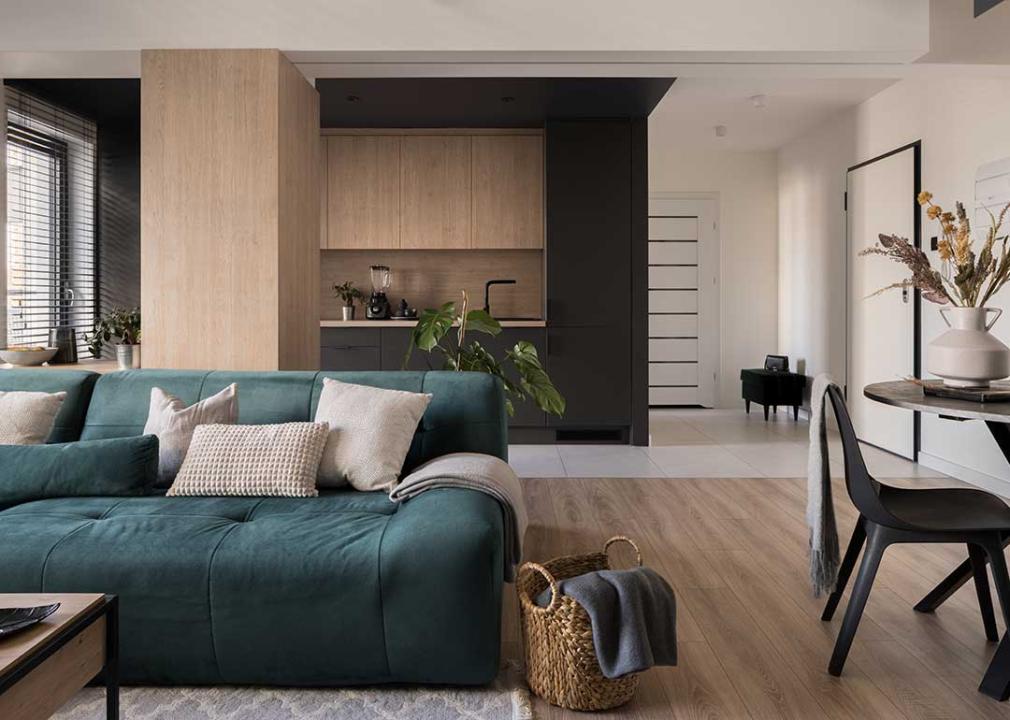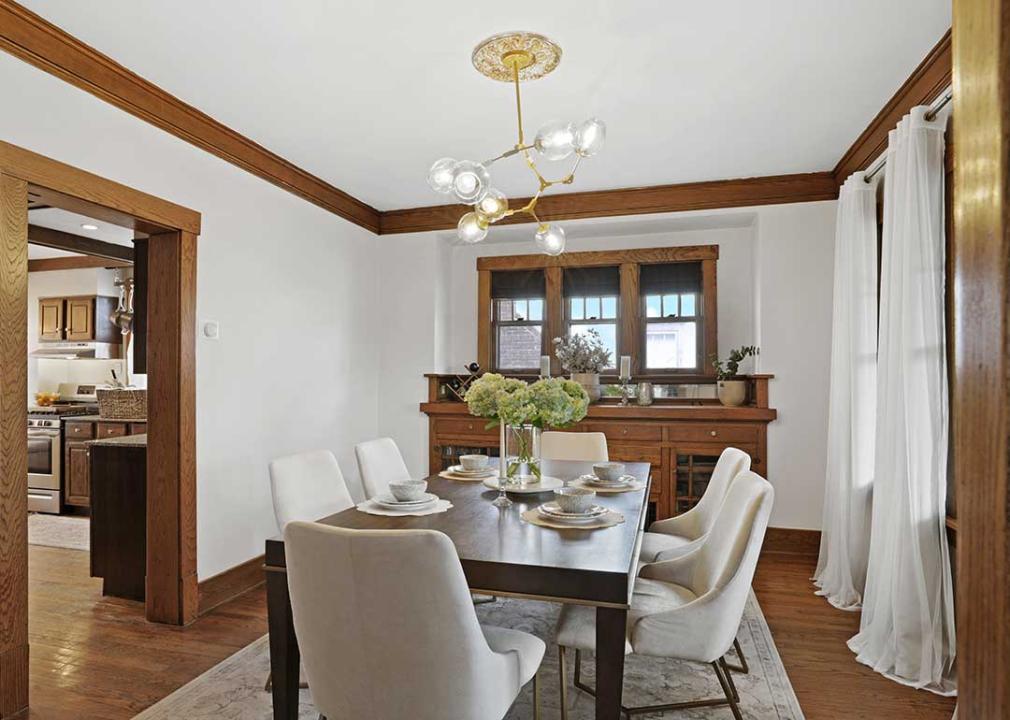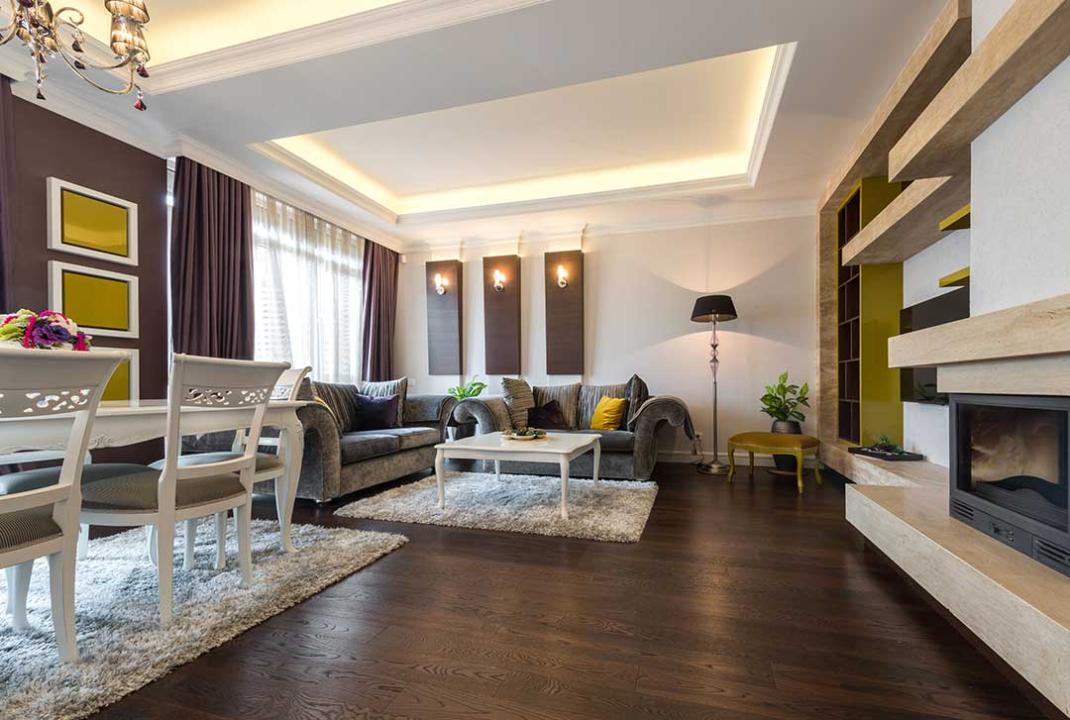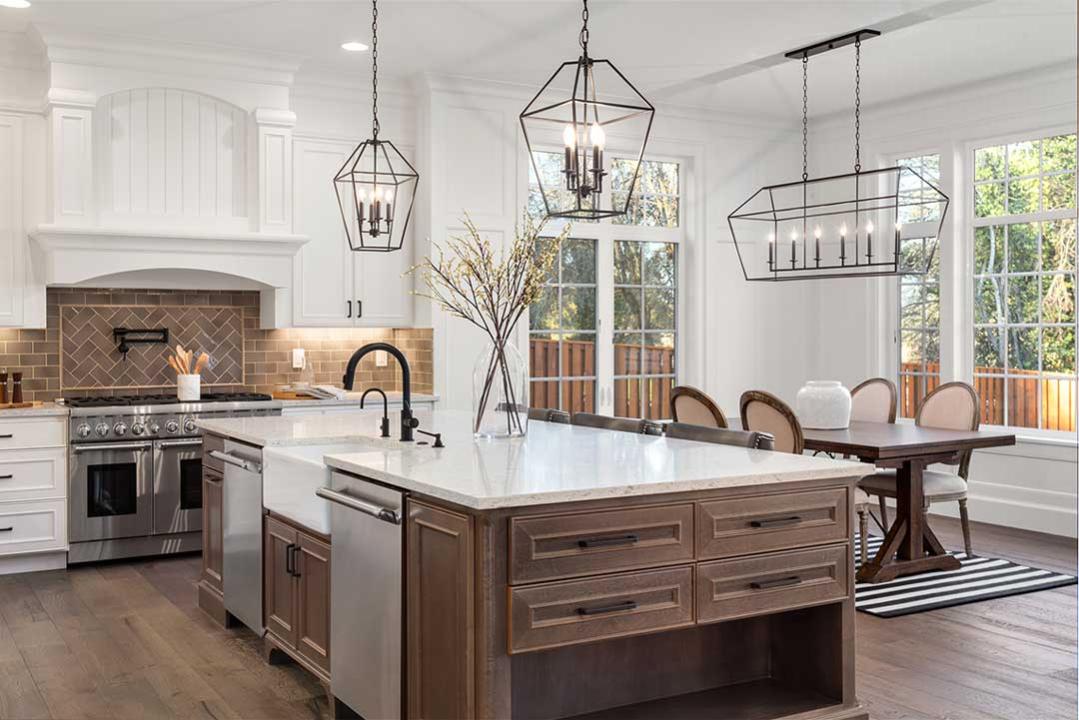Transitional design 101: How to bring this sophisticated look to your home

shutterstock
Transitional design 101: How to bring this sophisticated look to your home
living room with combination of modern and traditional design
Somewhere between the timeless allure of traditional and the clean lines of contemporary lies transitional style.
As spaces evolve with modern times, so too does the desire for a balanced blend of the old and new. Rent delves into the nuances of the transitional design style, an embodiment of sophistication and simplicity, harmoniously woven together.
Keep in mind, transitional style is all about finding that sweet equilibrium, where curated antiques meet minimalist modern, creating a unique and welcoming space that ultimately feels like home. Here’s how you can spot the look in real life and recreate it in your own spaces.
![]()

shutterstock
Transitional style 101
dining room with combination of modern and traditional design
What are some basics of the transitional interior design look? Not every transitional space will check every box, but you’re likely to find a medley of the following features.
- Neutral color palette: One of the hallmarks of transitional design is a largely neutral color palette. Think beiges, grays, creams and tans, which serve as a base. This doesn’t mean color is absent; rather, pops of color are introduced sparingly through accessories, art and accent pieces.
- Clean lines with curved profiles: Furniture in transitional spaces combines the straight lines seen in more contemporary pieces with the curves and detailing of traditional designs. For instance, a sofa might have clean, minimalist lines but be upholstered in a classic fabric or have tufted details.
- Mix of materials: You’ll often see a mix of materials in transitional design. This might mean a glass coffee table with an ornate wooden base, or a modern metal light fixture above a traditional dining set. The juxtaposition of these materials creates visual interest.
- Texture and fabric: With a neutral color palette, texture plays a big role in transitional style. Think tufted rugs, linen drapes and textured cushions. A variety of fabrics from leather to velvet can be used — in moderation — to bring depth, warmth and drama to any space.
- Less ornamentation: Unlike traditional design, which might include heavy moldings or detailed woodworking, transitional spaces tend to be on the simpler side. However, they’re not as stark or minimalist as traditional Scandinavian or Japanese interior design styles.
- Art and accessories: Transitional apartments might showcase modern art in ornate frames, or traditional art in sleek, minimalist frames. Accessories, like vases or lamps, should strike a balance between the contemporary and traditional. It’s all about toeing the line between styles without leaning too far in one direction.
- Functional and uncluttered spaces: While the look is balanced, transitional design embraces functionality. This means adequate storage solutions to ensure spaces are free of unnecessary items, which is especially important in apartment settings where space may be at a premium.
- Natural light: Embracing natural light is key in transitional design. Light and airy window treatments that allow for plenty of sunlight help make the space feel open and welcoming without requiring additional accessories or loud colors.
- Area rugs: To define spaces, especially in an open-concept apartment, use area rugs. This helps to visually break up the space while also adding warmth and texture.
- Consistency: Even though transitional style is about blending, it’s important to maintain a sense of consistency. This means not every piece in a room should be a mix of modern and traditional. The goal in transitional design is that the room — as a whole — achieves this balance.

shutterstock
Transitional design style in action
living room with combination of modern and traditional design
If you want to apply the transitional style to your apartment, start with a neutral foundation, incorporate modern and traditional elements carefully, and remember to keep it functional and uncluttered. With a keen eye for design and balance, you can create a space that feels equal parts fresh and timeless.
Soft transitional design: a 2023 trend
In 2023, the soft transitional interior design style gained significant popularity for its harmonious blend of traditional and contemporary elements. This style is characterized by its emphasis on creating a warm and inviting atmosphere while maintaining a clean and streamlined aesthetic.
While both soft transitional and OG-transitional interior design styles share common transitional elements, the former distinguishes itself through its heightened emphasis on comfort, a subdued color palette with subtle pops of color and a strong focus on textures that contribute to a warm and inviting atmosphere. With this in mind, you might see more cozy blankets, stacks of pillows, soft textures and more handmade keepsakes to embrace your best “soft life” and remind you of what you value most.

shutterstock
Transitional design: A how-to guide
kitchen with a mix of traditional and modern design
Transitional style strikes a delicate balance between the timeless elegance of traditional designs and the sleek minimalism of contemporary style. This design approach merges the best of both worlds to create a harmonious space that feels cozy yet sophisticated. For apartment renters, mastering the transitional style can result in a home that is functional and uniquely personal.
Transitional design tips for renters
Need a few starting tips to implement this design in your home? Start by trying a few of these.
- Start with the basics: For apartment renters, it’s best to start with the essentials. Invest in key pieces like a versatile sofa, a neutral rug or a functional dining set. These foundational items set the stage for the rest of the decor. With the larger pieces out of the way, you can add small artifacts and accessories over time to fully round out your design and make your place feel fully like home.
- Modular furniture: Given the sometimes limited space in apartments, opting for modular furniture can make a big difference. These pieces can be easily rearranged or adapted to fit different spaces, making them perfect for transitional stylists who love to switch things up every few months.
- Layered lighting: Lighting plays a crucial role in transitional spaces. Incorporate different light sources – from ambient and task lighting to accent lights. This layered approach not only provides functionality but also adds depth and warmth to the apartment.
- Temporary touches: Renters often face restrictions when it comes to permanent changes. But that doesn’t mean you can’t achieve the transitional style. Removable wallpapers, peel-and-stick tiles and adhesive hooks can transform spaces without compromising the apartment’s original state.
- Personal artifacts: Just because it’s transitional doesn’t mean it can’t be personal. Integrate family heirlooms, personal artworks or cherished collectibles. These items add warmth to any room and tell a story, making even the most cookie-cutter apartment unit feel like home.
Remember to rely on balance
Transitional style is about balance. It embraces change while respecting tradition. This approach offers apartment renters the flexibility to evolve their decor over time without straying too far from the foundational elements that make their space feel like home. With careful planning and a keen eye for design, any apartment can radiate the effortless elegance of transitional style.
Traditional and modern meet in transitional design
The beauty of transitional style lies in its innate ability to resonate with a wide range of audiences. It’s a symphony of eras, harmonizing the classic charm of traditional pieces with the sleek essence of contemporary design. As explored in this article, mastering this style isn’t about strict rules or rigid definitions; it’s about embracing fluidity, adaptability and a keen eye for balance.
As spaces continue to evolve and reflect the multifaceted personalities of their inhabitants, transitional style stands out as a testament to timelessness, bridging the past and the present in an expertly choreographed dance of design perfection.
This story was produced by Rent and reviewed and distributed by Stacker Media.